Autumn is my favorite season and one of its many charms is the brief couple of weeks where the leaves shift to brilliant golden colors. Unfortunately this is also one of the busiest times of the year for me, so I often completely miss out on going shooting until the branches are mostly bare. This year I was determined to get out as much as possible to enjoy and photograph some Fall foliage.
Starting out, I only wanted to push myself to shoot some landscapes. I wasn’t thinking much about gear. That said, I enjoy the unique experiences that some systems offer and I found myself grabbing a different camera each time I went out on this series. In the end it made for some interesting comparisons and observations. The experience was also unusual for me in that I kept revisiting the same area day after day. I normally might worry this would feel repetitive, but it allowed me to plan and prepare and know where to go as the light shifted. This was especially important for one of the setups I shot on, as I’ll discuss in a bit.
My destination was a nearby park that I’ve only just discovered and has already become one of my favorite places. I live in a city, which means getting out to shoot natural landscapes takes some effort. The sudden opportunity of 150 acres of semi-wild green space just 10 minutes from my door changed that completely. It turns out it had previously been a golf course which shut down two years ago due to chronic flooding. Nature wasted no time turning it into a beautiful oasis in an otherwise pretty dreary city. It was the perfect place for me to duck out to for a couple of hours each evening during golden hour.
1st Outing: Horseman VH with 6×9 back
On my first trip, I wasn’t thinking I’d be going out shooting several days in a row. Instead, I was planning to bring my most “serious” camera, the Horseman VH. The VH is a technical camera with functions similar to a large format rig, but smaller and on roll film. It gives most of the same movements such as shift, tilt, etc. Framing and focus is all done by ground glass, and a tripod is required. This is a very slow camera to use, but capable of incredible control over the scene not available in anything else that I own.
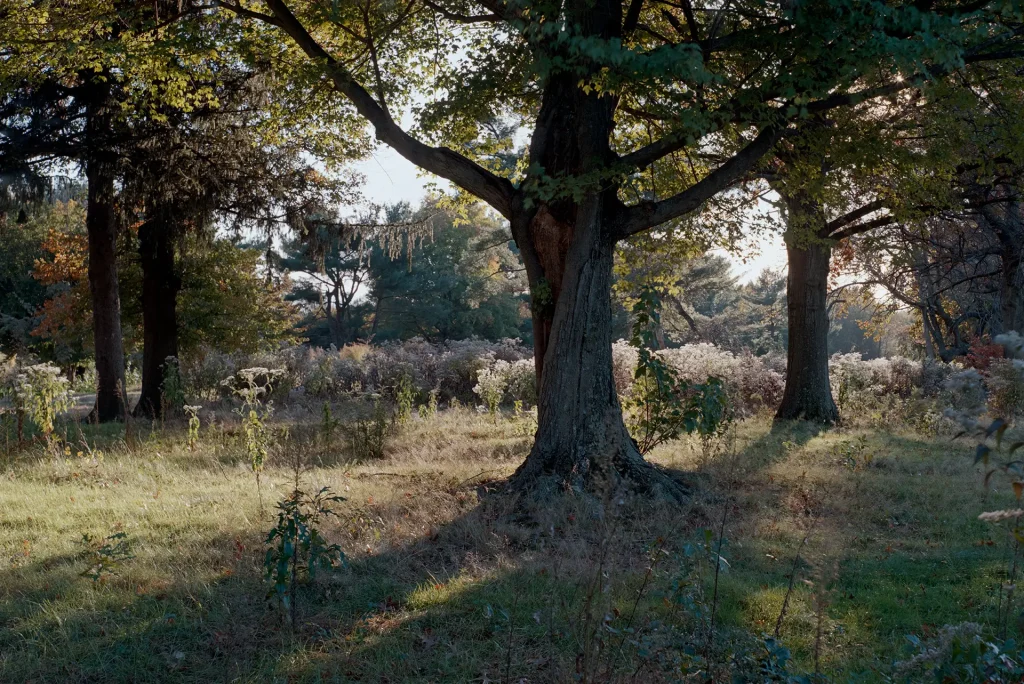
Unfortunately, I’m also fairly new to it and found myself fumbling quite a bit. The problems mostly came down to poor planning. Instead of bringing a dark cloth, I relied on a built in pop-out hood that helps shield the ground glass while framing. This is difficult in full daylight and made worse when using relatively slow lenses. Most shots, I couldn’t really see the edges of my composition which made my framing partly guesswork. On top of this, the golden hour light was changing very quickly and I was not yet familiar with the location. I spent most of my time setting up shots only to find that the light had moved or faded by the time I was ready. All of my metering was done with a Sekonic ambient meter, which gave good resuls. Overall, the experience felt frantic and I didn’t make use of the unique benefits a tool like the VH offers. This didn’t stop me from falling in love with the scenery though. I was determined to try again with something a bit more user friendly.
2nd Outing:Rolleiflex MX-EVS f3.5
Excited for a second attempt, I selected a camera that I know to be fast and responsive and always a joy to use: the Rolleiflex. For a long time, I overlooked TLRs because they seemed so limited compared to a 6×6 SLR system, but once I actually held and used one I could see how wrong I was. 6X6 SLRs are extremely capable, but they’re also heavy and I find them awkward when handheld. The Rolleiflex is light, simple, and fast to operate, making it much more fun to walk around with.
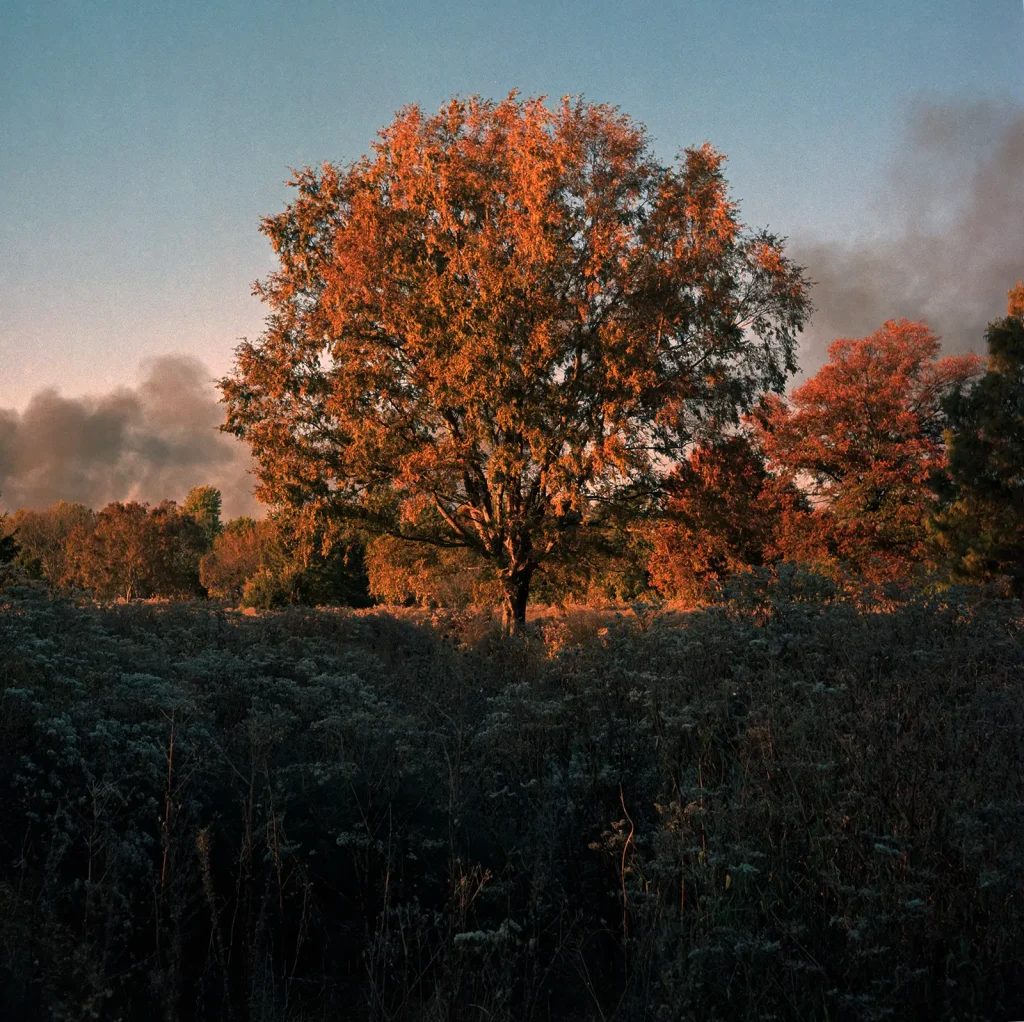
No surprise, this roll went much smoother. I was metering with the Sekonic again and, again, felt happy with the exposures I ended up with. What I loved most, and what might be my favorite thing about this camera, was framing in the waist level finder. Being able to look at the scene as a whole from a moderate distance really helps me see the composition and pre-judge if it’s a keeper or not. It’s like looking at a small print in my hands.
On this particular day, a fire was burning in a nearby industrial area that created drifts of smoke which added some extra drama to the sky. This was also the only day that I had a companion while shooting, with all the others being solo excursions. I am finding I work better on my own, though a fun and intuitive camera is best when I’m social shooting.
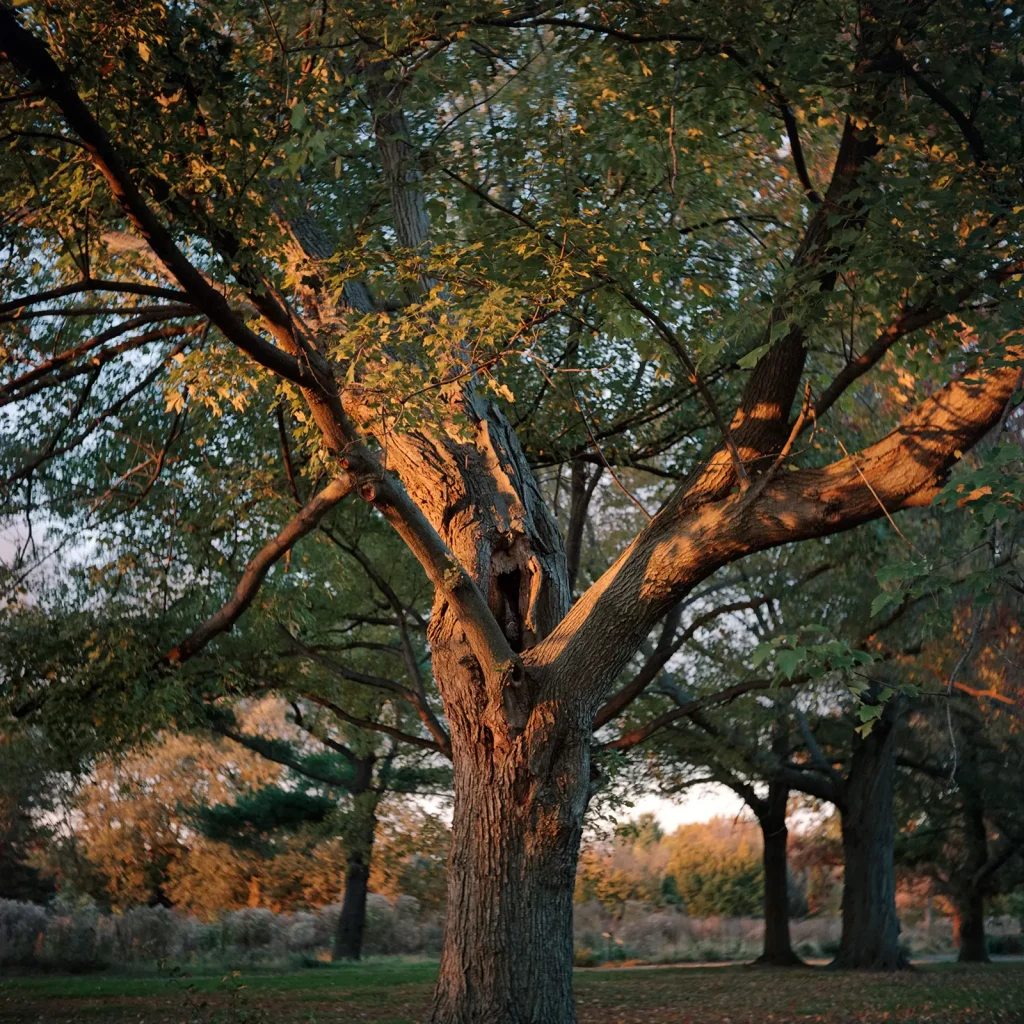
3rd Outing: Chroma Snapshot with 47mm Super Angulon f5.6 and 6×12 film back
Right about this time I received something very special in the mail. I’d been trying to get together a wide angle 6×12 set-up for some months now and finally settled on a compact 4×5 body with a Horseman 6×12 back. The most attractive option ended up being the Snapshot from Chroma Camera in the UK. Unfortunately, my 47mm lens had too short a flange to fit. After some emailing, I was offered a custom build that could accommodate my intended use. The final result exceeded all my expectations. I topped it with a Voigtlander 15mm finder (masked to 1:2 proportion) and small bubble level. After some time pulling all the pieces together and making sure everything was in light tight working order, this was my first opportunity to shoot it.
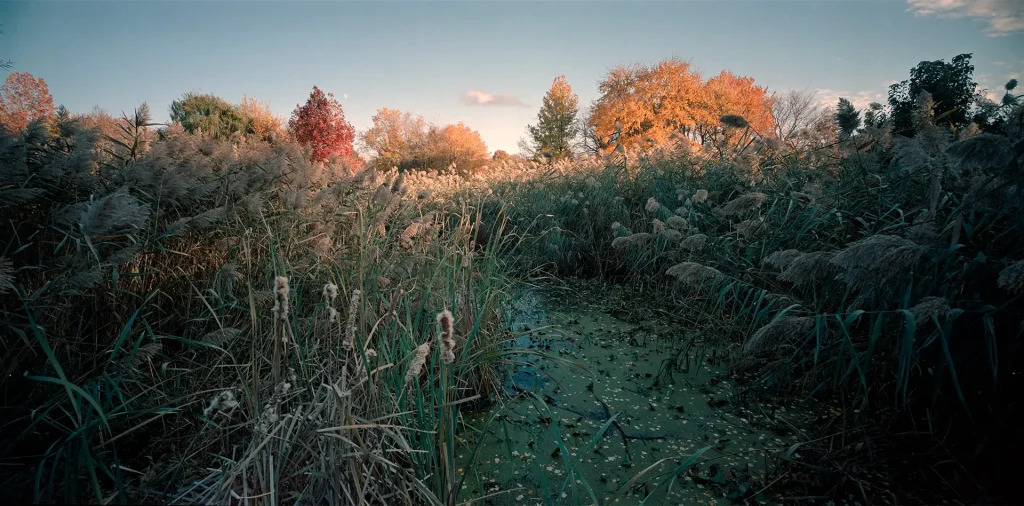
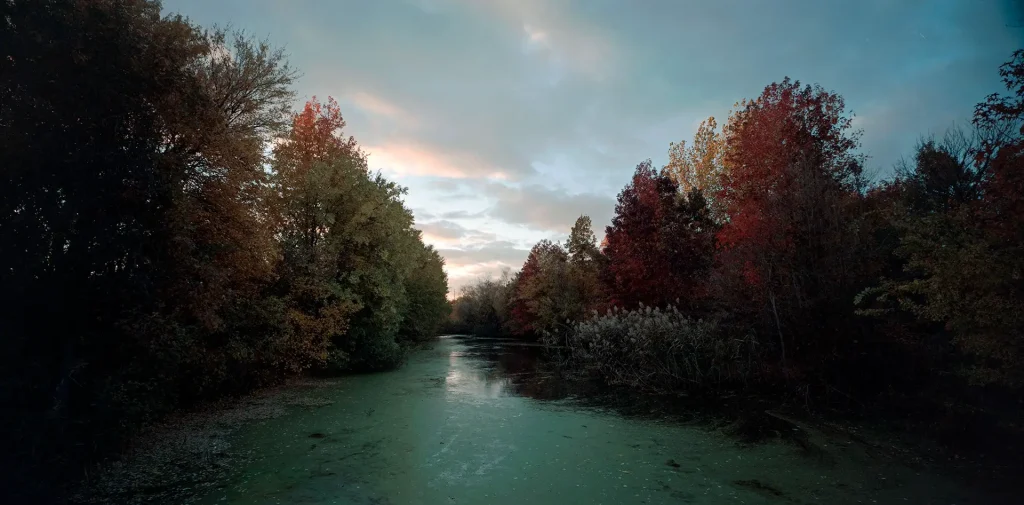
On 6×12, you only get six photos per roll of 120. This meant selecting my scenes very carefully and metering very carefully. I wanted to make the most of these and really see what this camera could do, so I brought a Minolta Spot Meter F for metering on this trip. Overall, I couldn’t have been more pleased with the camera. It’s surprisingly beefy, but easy to handle. Without bringing the groundglass back, I was shooting everything by scale focus and guessing distances. This is something I’m used to with some other bodies I own and found it a breeze with such a wide (on 6×12) lens. Most of the time I just used hyperfocal distances and results looked great. I didn’t bring a tripod but I might next time just to make use of slower speeds and smaller apertures. The 47mm lens is tremendously wide on 6×12, giving images a very dynamic look.
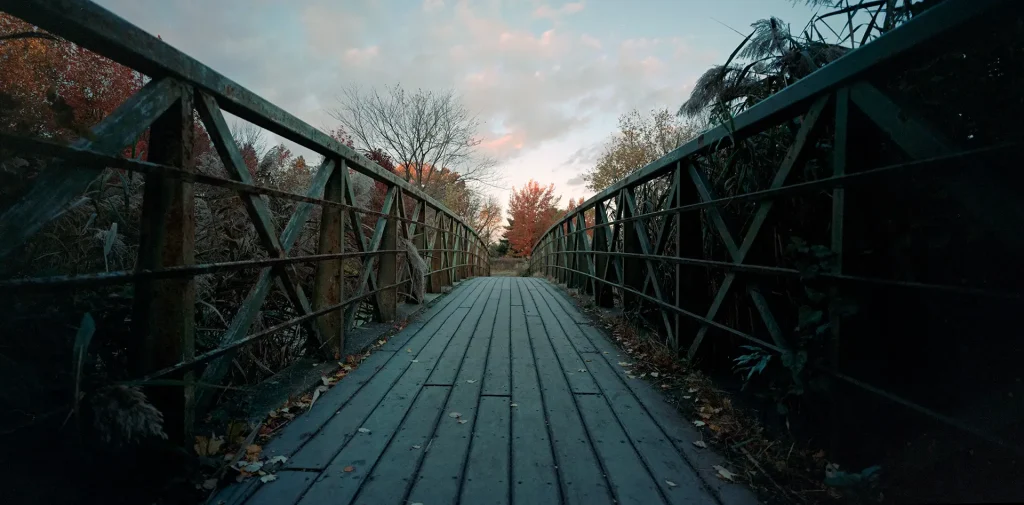
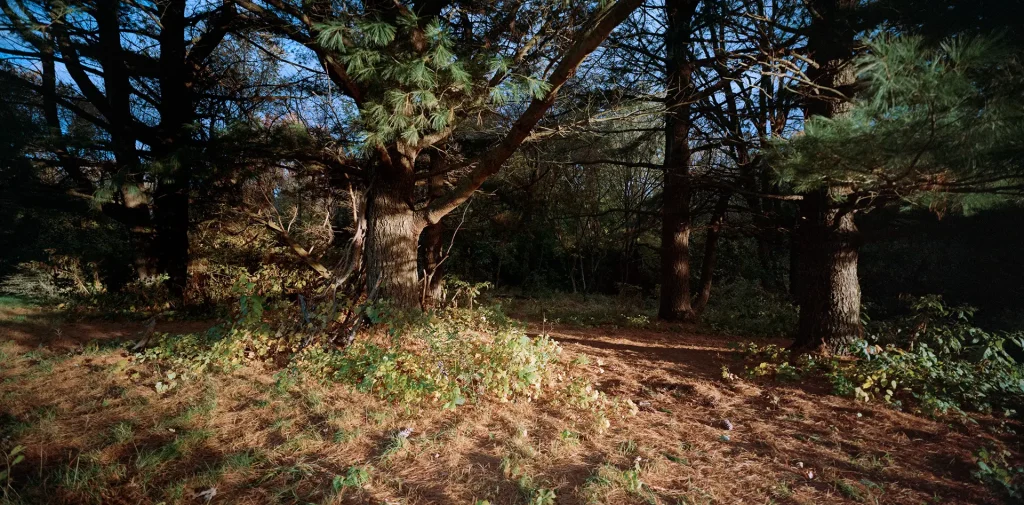
4th Outing: Fujica Gs645
At this point, I was getting into the spirit of comparison and experimentation. It occurred to me that I’d so far shot a view camera, a TLR, and a scale focus camera. Why not go back out with a rangefinder? The Gs645 is a folding camera made by Fuji in the 1980s and a very nice option for something light and portable. I’ve shot with this camera previously on a trip to Yosemite and so I knew it would perform, and it did. Some of my favorite shots of the series were from the modest 645 Fuji. It also features a very accurate built in meter which was a nice convenience.
By now I was also starting to get familiar with the location and feeling confident to do some exploring into side paths and sometimes off paths all together. It was easy to forget that there is a bustling city just beyond all these trees.
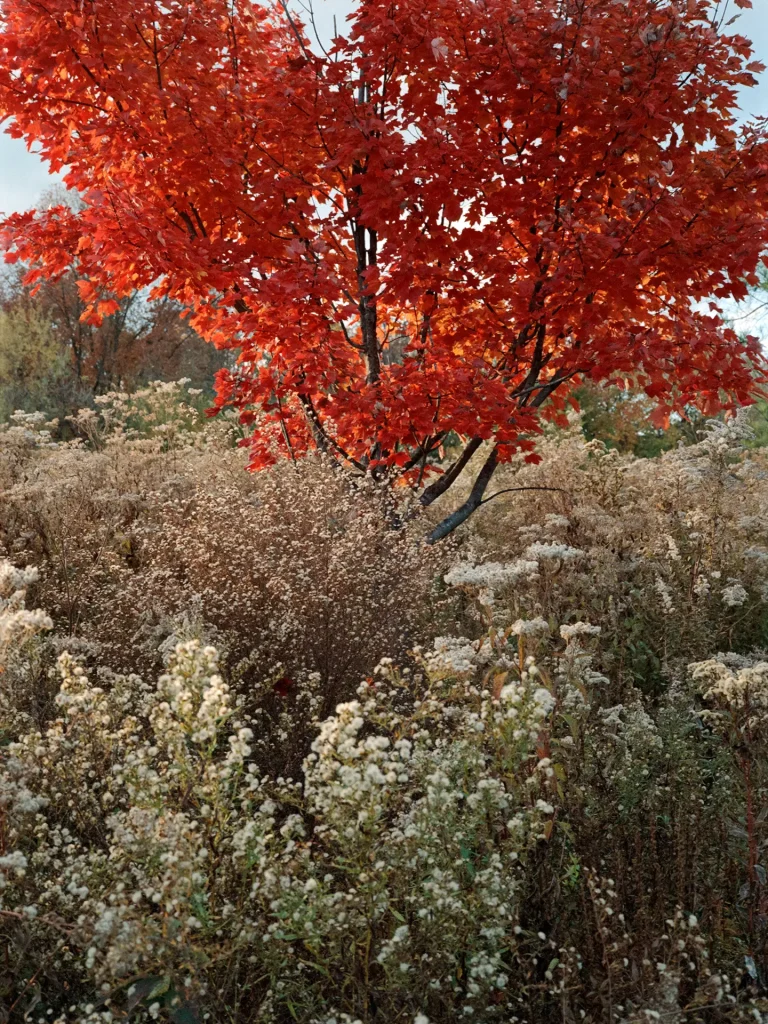
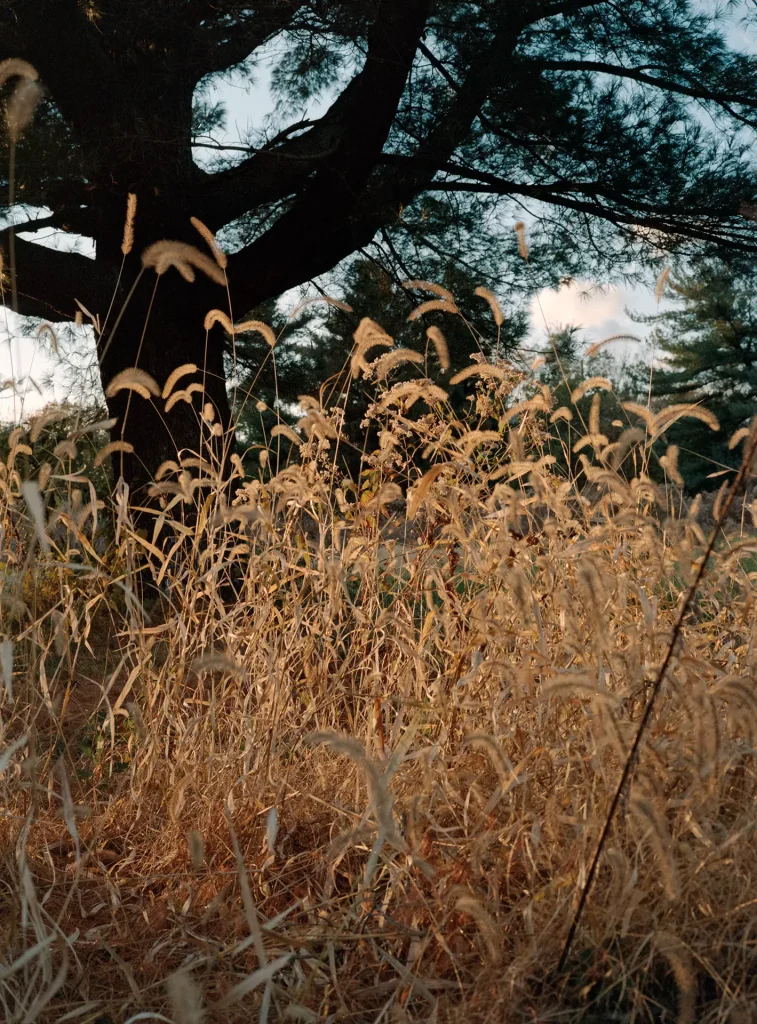
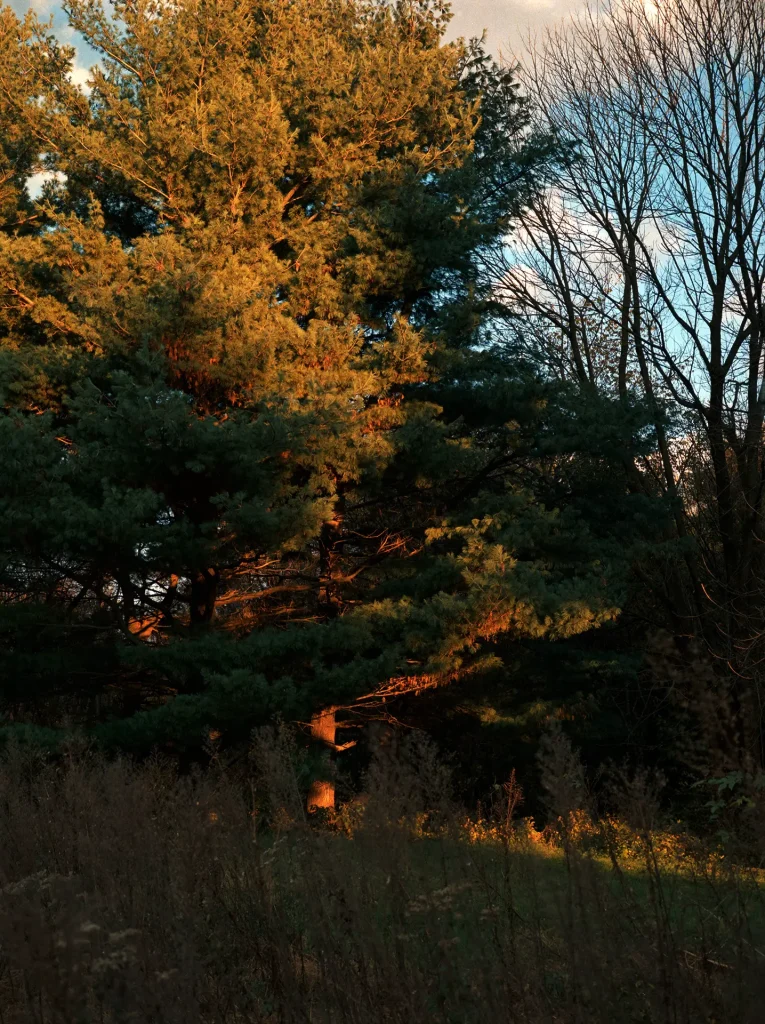
5th Outing: Nikon F2
At no point had I considered shooting 135 for landscapes. I feel like this style of shooting wants larger negatives. This, after all, was why I kicked everything off with the Horseman VH. That said, I absolutely love the F2. My preference for 35mm bodies is rangefinders, but I tried an F2 earlier this year and it was an instant “where have you been all my life?” moment. This camera is just pure mechanical joy for me.
I started wondering, as the F2 sat there looking so amazing and eager to go shooting, how would 35mm images compare against the medium format I’d been shooting so far? I decided to bring it out with the intention of format comparison and so I would give the Nikon every advantage that I could. I brought a tripod and release cable which I normally wouldn’t bother with for daytime 35mm and ended up using them heavily as the light dropped. I also shot on Ektar for its super fine grain, decent latitude, and vibrant color. For metering, I was using the humble Photomic prism finder, still spot on after half a century.
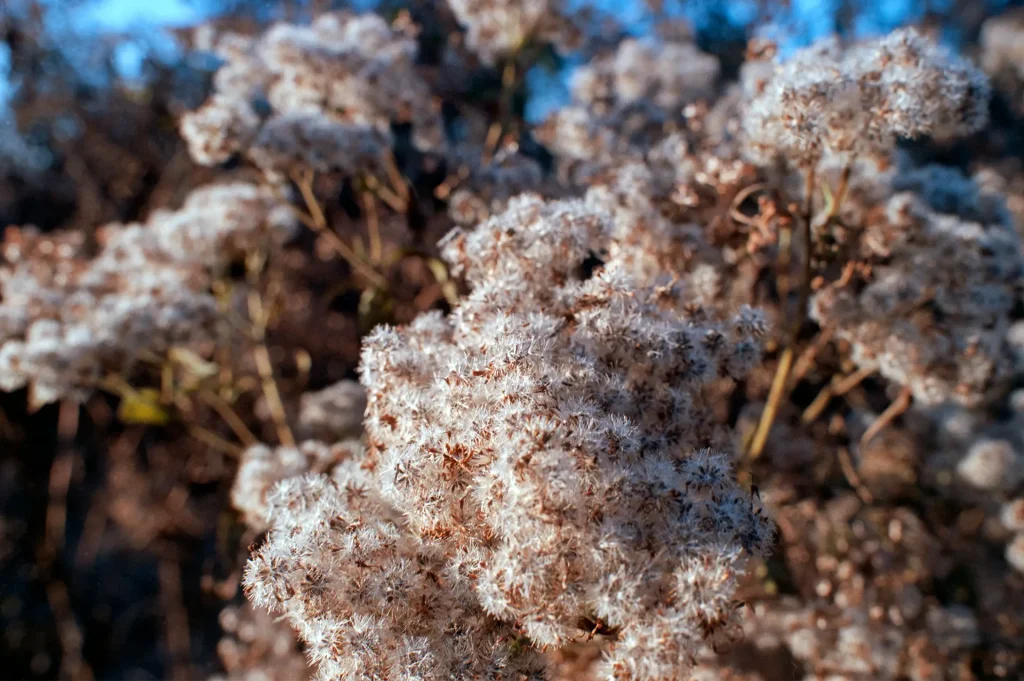
Something that surprised me was how many more compositions I shot with the F2. It seems I calibrate my threshold of what’s worth capturing depending how many frames I have to work with. Since prior evenings were topping out between 6-12 shots, I worried about getting through 36 in one visit. As it happened, I was shooting much more freely and exploring details in larger scenes I might otherwise not have taken a chance on. My keeper rate was comparable to what I was getting on 120 and I actually finished earlier than I had on previous visits. I was wishing I’d brought a second roll as the sky lit up a gorgeous sunset on my hike out.
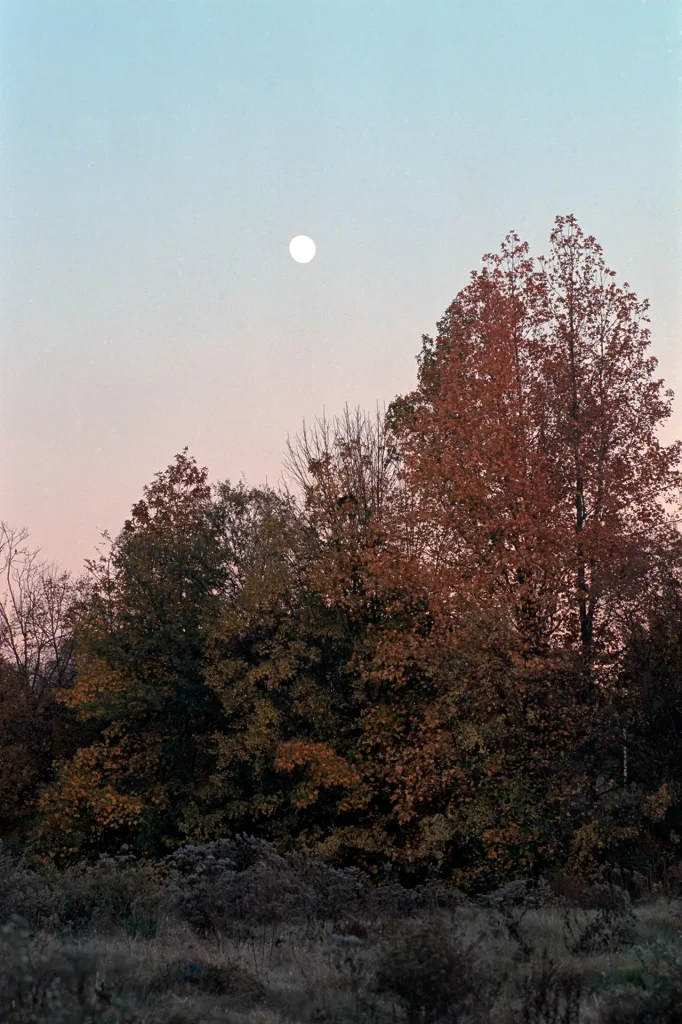
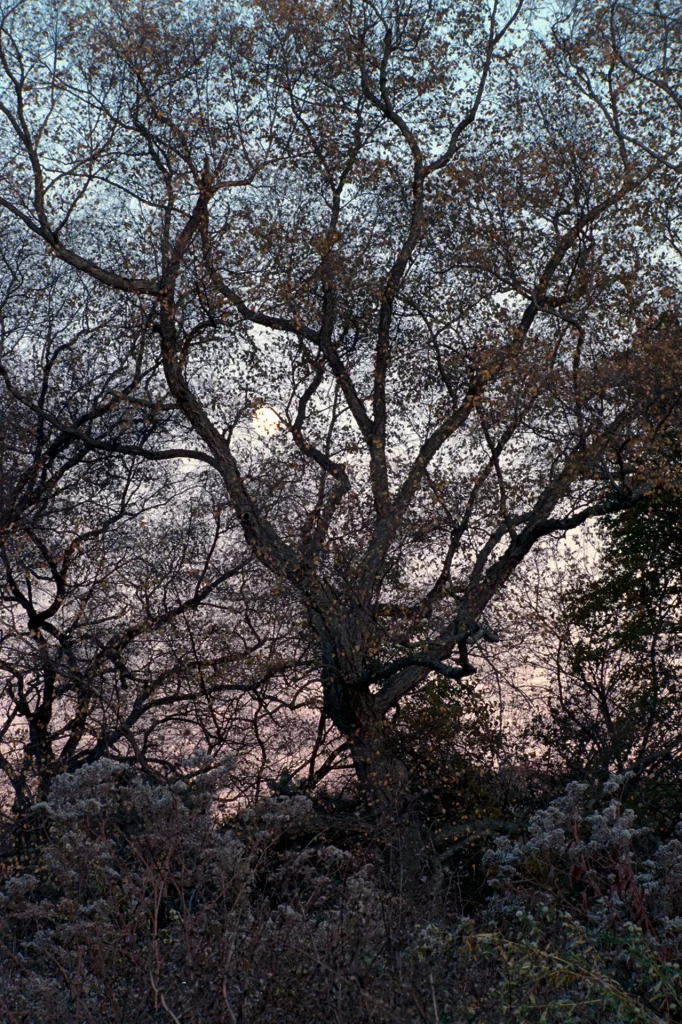
Final outing: The Horseman VH (again)
With all these shoots behind me, and still feeling let down by that first trip with the VH, I decided to give it another go. This time I resolved to take my time. To improve on the earlier trip, I brought an improvised dark cloth to help my framing, a spot meter for precise exposures, and I set out much earlier in the day when the light was more consistent. Most of these trips had been right around two hours of shooting each. This one ended up just over four hours, which is quite a long time for 8 exposures. It was also the trip that I think I was most able to just enjoy the space and experience. Exploring, finding compositions, setting up, waiting for light. It was a completely different vibe from that first day, and I was able to make much more use of the technical camera movements. I have a lot more learning to do on that set-up, but I’m excited to get out with it now that I better understand its ideal pace.
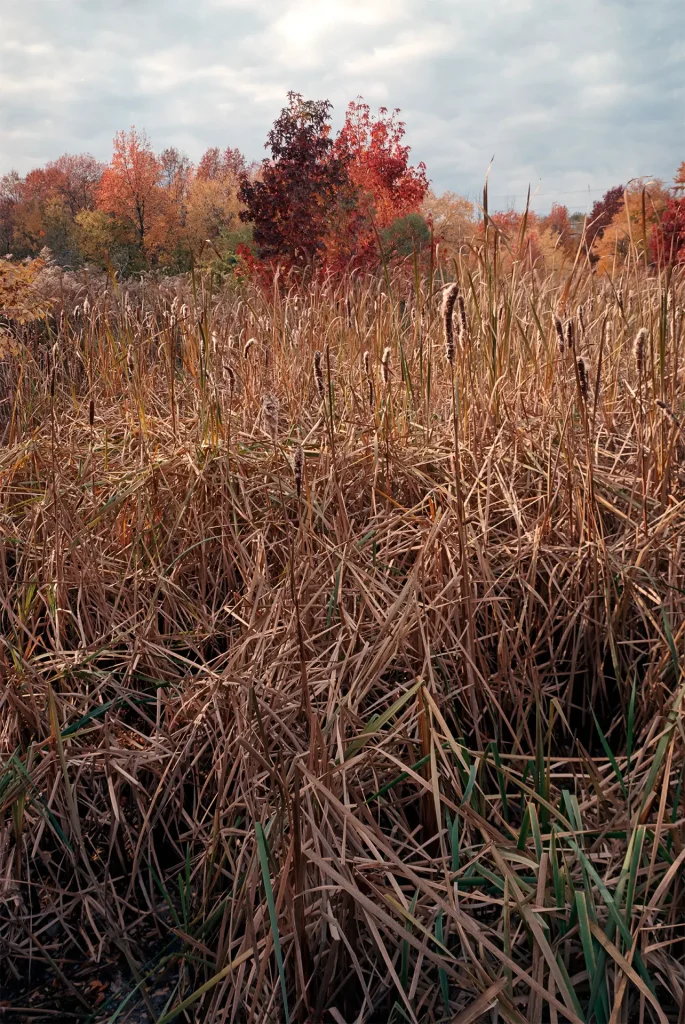
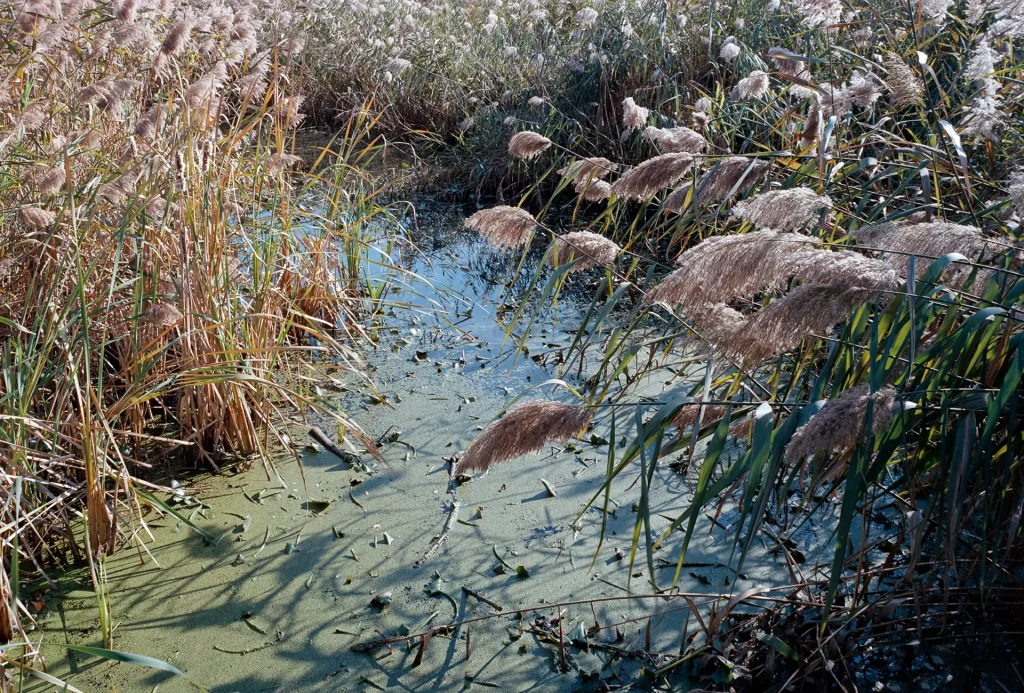
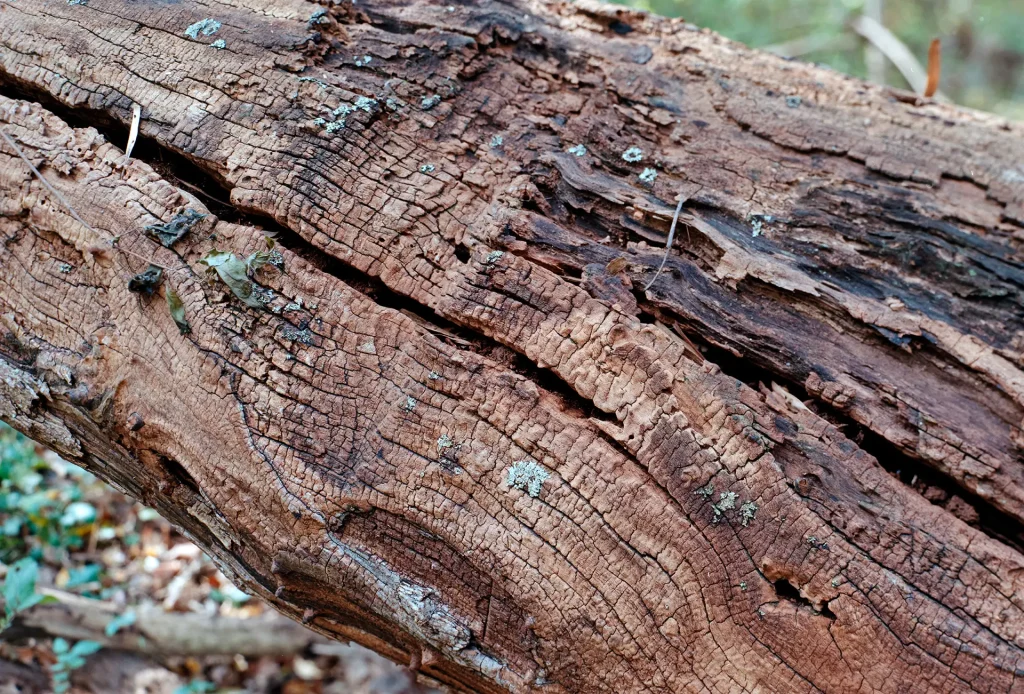
The (predictable?) results
In the end, I found I had at least one or two good shots from each day. Some were better than others though, and I think I can appreciate that certain tools are fit for certain tasks. The 35mm shots, while still very nice, do feel they’re missing a certain crunch or depth that the medium format shots have. I love the F2 dearly, but I’ll probably stick to larger film for this type of shooting. If I were scouting an area though, the F2 would be a good option to plan for future set-ups. I might also feel differently if I’d been using black and white where I feel the grain of 135 can have it’s own magic. A comparison for another day.
I was tremendously happy with the more deliberate, careful shots on the Horseman VH and the Snapshot 6×12. The image quality is superb, and I enjoyed really concentrating and taking my time. That said, the Horseman would be very difficult to use outside of landscape or controlled studio shooting.
The Rolleiflex and Fujica were the happy mediums, offering a few more shots per roll and ease of use while the larger negative also gave finer image quality. These both also have excellent finders, something very important to me.
I sometimes feel anxious or ridiculous to own multiple formats and systems, but they’re all just such a joy to use! One of the great pleasures of analog photography is exploring the many decades of engineering marvels available. When I find a camera that makes me smile while using it, it’s really hard to let it go. More than that, I like how each one helps me see the world just slightly differently. From the palm sized viewing screen of the TLR to the full peripheral awareness of the 6×12, from the hyper intentional technical camera that forces me to go slow to the intuitive SLR or rangefinder that urges me to act fast, each one made that day’s trip something special.
Thanks for reading! All above images were DSLR scanned using Valoi holders and color corrected with Grain2Pxels. Find more of my photos, as well as albums for various cameras and lenses I’ve shot, at my Flickr page.
Share this post:
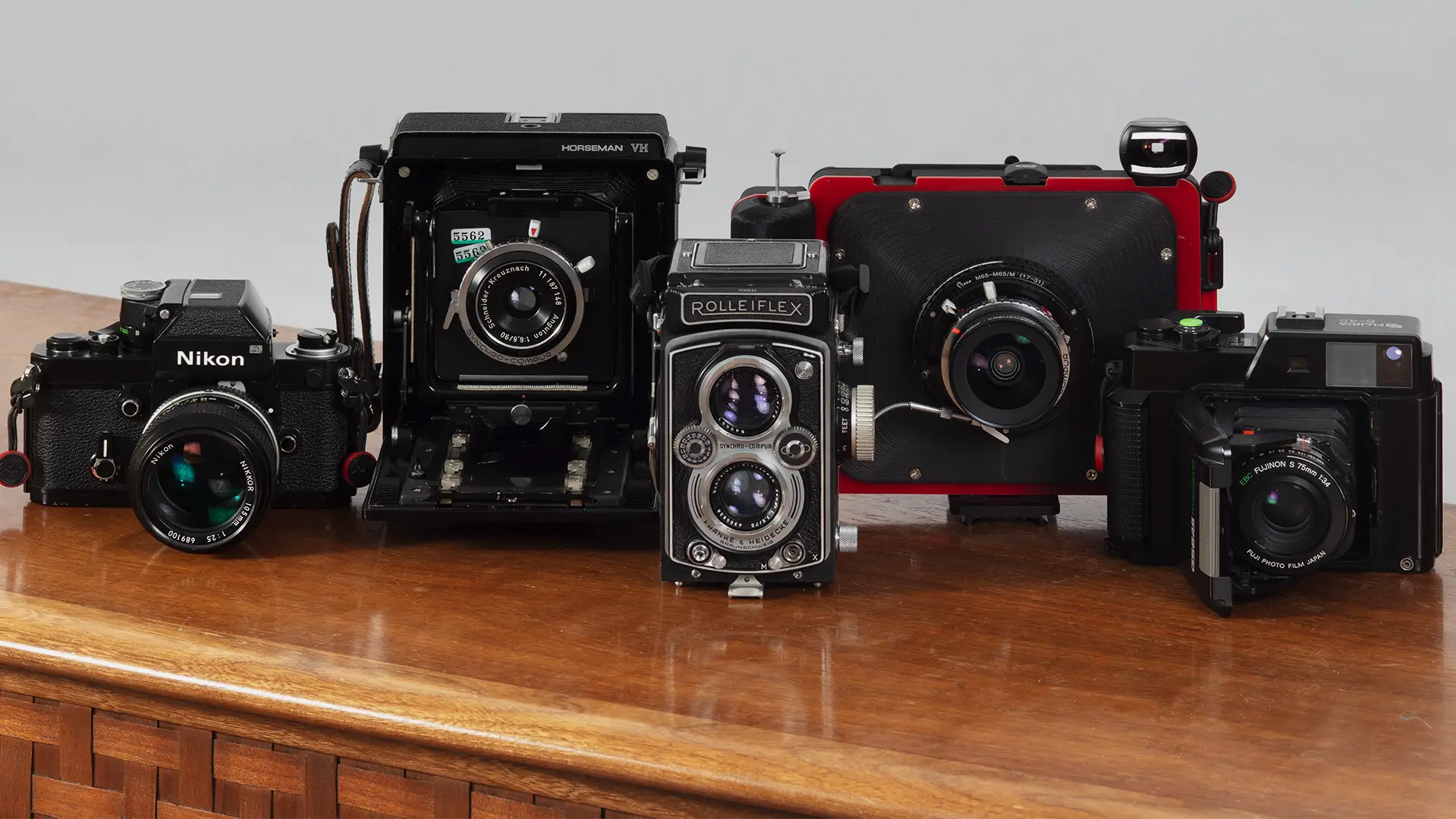








Comments
Terry B on Fall Leaves with Five Cameras – By Dave Palumbo
Comment posted: 18/12/2021
Spring and Autumn (Fall) are, IMHO, the best seasons for landscape. Winter has its own attraction, too. The lower angle of the sun provides for a greater degree of modelling light, and here in the UK, at least, we will be blessed with trees in full leaf, but with spring providing lush, fresh, greens with a sort of "glow" which is lost by full summer, and then the autumnal colours. Having a wide variety of deciduous trees is a huge advantage and of course this won't be restricted to the UK.
You have some lovely images here, especially the last three with the Horseman, with your earlier visits no doubt honing your appreciation of the location. Thanks for a very interesting article.
Comment posted: 18/12/2021
John Fontana on Fall Leaves with Five Cameras – By Dave Palumbo
Comment posted: 18/12/2021
Comment posted: 18/12/2021
JAMES LANGMESSER on Fall Leaves with Five Cameras – By Dave Palumbo
Comment posted: 18/12/2021
Your color renditions capture perfectly the fall season as it should be. Great work.
JEL
Comment posted: 18/12/2021
Kurt Ingham on Fall Leaves with Five Cameras – By Dave Palumbo
Comment posted: 19/12/2021
Comment posted: 19/12/2021
Peggy on Fall Leaves with Five Cameras – By Dave Palumbo
Comment posted: 19/12/2021
Comment posted: 19/12/2021
Alex on Fall Leaves with Five Cameras – By Dave Palumbo
Comment posted: 21/12/2021
Comment posted: 21/12/2021
Giuseppe on Fall Leaves with Five Cameras – By Dave Palumbo
Comment posted: 21/12/2021
I was interested in your thoughts on the Chroma set up - How would you rate it? Would it make for a good starter set for those who want to approach large format on a budget? I really don't have the room for a full Intrepid setup. Wondering if you tried doing some 4x5 with it? Would love a Chroma 4x5 review when you have some time!
Comment posted: 21/12/2021
Leonel LeyvaC on Fall Leaves with Five Cameras – By Dave Palumbo
Comment posted: 21/10/2022
Tienes razón...
Lo importante es que el Arte de la Fotografía te haga sonreír..
Te haga feliz.
Saludos y felicitaciones...
No dejes de hacer imágenes.
Comment posted: 21/10/2022
Comment posted: 21/10/2022
Mark on Fall Leaves with Five Cameras – By Dave Palumbo
Comment posted: 08/07/2023
I wonder about the value of using film when the images are then digitally scanned, its like taking a digital photo of a film photo, why not just take a digital photo in the first place?
Ive been thinking of buying a madium format camera for a more appealling look than digital gives but does not all just end up the same.